Discover Dysregulated Kids: Science-Backed Parenting Help for Behavior, Anxiety, ADHD and More That Builds Emotional Regulation
Dysregulated Kids: Science-Backed Parenting Help for Behavior, Anxiety, ADHD and More That Builds Emotional Regulation

Dysregulated Kids: Science-Backed Parenting Help for Behavior, Anxiety, ADHD and More That Builds Emotional Regulation
Author: Dr. Roseann Capanna Hodge
Subscribed: 28,701Played: 305,996Subscribe
Share
© Copyright 2025 Dr. Roseann Capanna Hodge
Description
Parenting comes with joys and challenges. If you are a mom or dad with a child or teen who is struggling with everyday life or clinical issues like ADHD, Autism, Dyslexia, Executive Functioning, Anxiety, OCD, Depression or Mood, or Lyme and PANS/PANDAS, then you need solutions. If you have seen Dr. Roseann on TV, then you know she doesn’t shy away from real talk about real problems. She gives parents the science-backed keys to unlocking big and small kid and family issues. Blending hope with science, Dr. Roseann teaches parents how to calm the brain to have a happy family. https://drroseann.com
338 Episodes
Reverse
If every mealtime in your house feels like a showdown—tears, gagging, or flat-out refusal to try a bite—you’re probably exhausted and worried. You’ve bent over backwards with rewards, consequences, and endless negotiations, yet nothing seems to work. I want you to know—you’re not alone.In this episode, I’ll share why your picky eater’s behavior is more than just “being fussy,” the biological factors that may be driving your child’s picky eating habits—from sensory sensitivities to gut health—and how you can bring more calm (and more healthy foods) back to the dinner table.Why does my child’s picky eating feel like a constant battle?If every mealtime feels like tug-of-war, you’re not imagining it. What looks like “bad behavior” is often your child’s biology at work. Many kids aren’t refusing food out of stubbornness—they’re reacting to sensory sensitivities or a stressed nervous system.When we understand that picky eating is often about dysregulation instead of defiance, everything starts to shift.Here are a few truths I want you to hold onto:Behavior is communication. Food refusal can be your child’s way of saying, “This feels overwhelming.”Sensory triggers are real. Textures, smells, and even temperatures can set off strong reactions.It’s not bad parenting. Picky eating is a sign of a dysregulated brain—not a reflection of your efforts.Power struggles backfire. The more meals feel like a battle, the harder it is for your child to feel safe around food.Your child isn’t spoiled or dramatic—they’re struggling. And when we calm the nervous system first, we can bring more peace (and variety) back to the table.When your child is dysregulated, it’s easy to feel helpless.The Regulation Rescue Kit gives you the scripts and strategies you need to stay grounded and in control.Become a Dysregulation Insider VIP at www.drroseann.com/newsletter and get your free kit today.What biological factors cause picky eating in kids?If your child’s picky eating feels bigger than just “not liking vegetables,” you’re right—biology often plays a huge role.Research, including twin studies from King’s College London, shows that both genetic factors and environmental factors shape how kids develop food preferences. That means picky eating isn’t about willpower or stubbornness—it’s about what’s happening inside your child’s body and brain.Common biological roots of picky eating include:Gut issues like dysbiosis or inflammation that can shift cravings and digestionNutritional deficiencies (zinc, magnesium, B6) that impact appetite and mood regulationNeurodevelopmental disorders such as ADHD, autism, anxiety, or OCD that make eating more restrictiveEarly feeding experiences (reflux, choking, low muscle tone) that create stress around foodGenetics—studies show identical twins share more picky eating behaviors than fraternal twinsConnections to other eating disorders such as ARFID, which can overlap with restrictive eating patterns and disordered eating behaviorsIn some cases, body image concerns may show up in older kids or teens, further complicating eating habits🗣️ “Picky eating in kids isn’t about being spoiled or difficult—it’s biology shaping eating habits. Once you understand the root cause, you can take steps that actually help.” – Dr. RoseannHow can I help my picky eater try new foods without a...
Parenting a child who pushes back at every turn can feel downright draining. You’ve tried the time-outs, the sticker charts, the consequences—yet the meltdowns keep coming. It’s easy to start second-guessing yourself or wondering if you’re doing something wrong. You’re not alone. It’s not bad parenting—it’s a dysregulated brain.In this episode, I’ll show you why what looks like defiance is actually emotional dysregulation—a nervous system issue, not a character flaw. We’ll walk through the five signs your child is emotionally dysregulated, not defiant, and I’ll give you practical, brain-based steps you can use to calm the storm and move forward with hope.Why does my child overreact to small problems?One of the biggest giveaways of emotional dysregulation is when kids have big feelings over little things. Maybe it’s the broken crayon, the wrong-colored cup, or being asked to do five more minutes of homework.These disproportionate reactions are a sign that your child’s nervous system is in overdrive. It isn’t bad behavior—it’s your child’s body signaling stress overload.For younger children, this often looks like temper tantrums. For older children, it may show up as irritability, anger, or even shutting down. No matter their age, these big emotions tell you that their emotional regulation skills need support.The key question to ask yourself is: Is this their go-to response? If your child is regularly melting down over small problems, it’s not about being oppositional or defiant. It’s a clear sign they’re struggling with:Emotional regulationSelf control and coping skillsA dysregulated brain that needs help returning to calmWhen you reframe these moments as emotional dysregulation rather than “bad behavior,” it shifts how you respond. Instead of getting caught in power struggles, you can focus on calming the brain first—because that’s where real change begins.Why does my child stay upset long after a problem is solved?Some kids just can’t seem to let go. Even after the situation is over, they’re still stuck in those big emotions long after everyone else has moved on.This isn’t about holding a grudge—it’s their nervous system getting caught in a stress loop. No matter how much reassurance you give, they may replay the moment again and again.That’s what emotional dysregulation does: it traps kids in the feeling and blocks them from practicing self regulation on their own.So what helps? Co-regulation. Your child’s behavior is communication, and what they need most is your calm presence. That means:Keeping your tone soft and steadyModeling deep breaths and slowing your body downStaying close so they feel safe, even if they don’t accept comfort right away🗣️ “Your child isn’t choosing to stay upset—they’re stuck in a stress loop. When you calm your own nervous system, you give their brain the roadmap back to regulation.” – Dr. RoseannWhen we, as parents, stay calm first, we give our kids the emotional skills and examples they need to eventually regulate their own emotions.Why does my child reject comfort when upset?It’s heartbreaking when you reach out to comfort your child and they push you away, scream, or even call you names. While it feels like rejection, what’s really happening is that their brain is flooded and their nervous system can’t take in more input.A dysregulated child often can’t receive comfort until their body begins to settle. These emotional responses aren’t about disrespect or bad behavior—they’re stress-driven survival mode. And remember, even adults sometimes need space before they can calmly re-engage.What...
Have you ever wondered why your child melts down after the smallest stressor—no matter what strategies you try? It can leave you drained, second-guessing yourself, and wondering if you’re doing something wrong. You’re not alone. It’s not bad parenting—it’s a dysregulated brain.In this episode, we uncover the hidden link between gut issues and emotional dysregulation in kids. You’ll learn how the gut-brain connection affects mood, behavior, and focus—and discover practical steps to support both your child’s emotional well-being and their gut microbiome at home.Why does my child melt down after eating certain foods?Many parents tell me they notice their child’s behavior shifts right after meals—but what they don’t realize is that the gut microbiome plays a significant role in emotional regulation.Food sensitivities like gluten, dairy, and artificial dyes can spark systemic inflammation, which shows up as mood swings and behavior changes.Constipation and poor gut health allow toxins to recirculate, affecting both emotional well-being and even pain perception.A leaky gut—or increased intestinal permeability—lets harmful substances enter the bloodstream, disrupting the brain and nervous system.So if your child melts down after eating, it may not be “just behavior.” It’s communication from the gut-brain axis—and your child’s body is asking for help.If you’re tired of walking on eggshells or feeling like nothing works…Get the FREE Regulation Rescue Kit and finally learn what to say and do in the heat of the moment.Become a Dysregulation Insider VIP at www.drroseann.com/newsletter and take the first step to a calmer home.How are gut issues connected to emotional dysregulation?Most parents assume the gut is only about digestion, but it actually has a direct line to the central nervous system and your child’s mental health. When the gut is off balance, your child’s ability to regulate emotions, focus, and cope with stress takes a hit too.Did you know that up to 90% of serotonin, the neurotransmitter that helps regulate mood and attention, is made in the digestive tract? That means your child’s gut isn’t just helping them process food—it’s helping them manage emotions and stay calm.When there’s gut dysbiosis (an imbalance of beneficial gut bacteria), kids are more likely to struggle with heightened anxiety, depressive symptoms, and poor emotional regulation.Chronic stress and an unhealthy gut microbiome create a feedback loop that keeps kids stuck in cycles of emotional distress and behavioral challenges.🗣️ “When the gut is inflamed, the developing brain can’t function at its best—leading to struggles with emotional well-being, focus, and even sleep disturbances.” — Dr. RoseannCould my child’s diagnosis be linked to poor gut health?Parents of kids with ADHD, autism spectrum disorder, or mood disorders are often so focused on managing daily symptoms that they overlook something powerful—the gut. Yet research shows that the gut-brain axis plays a crucial role in all of these conditions.When the gut is out of balance, the brain struggles to do its job—and kids feel it in their mood, behavior, focus, and even sleep.Take ADHD, for example:Gut dysbiosis—an imbalance in gut bacteria—can interfere with dopamine and serotonin production.Since these neurotransmitters are key for attention and impulse...
Parenting a child who melts down no matter how hard you try can feel draining and lonely. You’ve done the time-outs, taken away privileges, tried the sticker charts—and yet the child’s behavior keeps coming back.Instead of helping, those strategies sometimes make things worse, leaving you wondering if you’re doing something wrong. You’re not alone, and it’s not bad parenting—it’s a dysregulated brain.In this episode, I’m breaking down why traditional discipline backfires on sensitive or neurodivergent kids, and what actually works instead. I’ll give you practical strategies to calm the nervous system first, show you why connection always beats punishment, and teach you how to build the problem solving skills your child truly needs.Why doesn’t time-out work for my neurodivergent child?If you’ve ever sent your child to time-out only to have the meltdown get worse, you’re not imagining it. For many neurodivergent kids, time outs don’t feel like teaching—they feel like rejection. And instead of calming down, their nervous system ramps up even more.Research shows that parents use time-outs inconsistently, and the reality is, they’re often applied when a child is already at peak emotional dysregulation. In that state, the brain can’t process or learn. Many neurodivergent kids experience shame, anxiety, or even sensory overload instead of gaining self-control.Here’s what’s really happening:Time-outs miss the teachable moment because kids are too dysregulated to reflect.Sensitive children feel wrong or rejected, which can trigger bigger power struggles.Connection is the game changer, because safety is what allows real emotional regulation.So if time-outs keep backfiring in your family, it isn’t about bad parenting. It’s not bad parenting—it’s a dysregulated brain.How can I stay calm when my child is melting down?I know how exhausting it feels when your child is screaming, crying, or refusing to listen. In those moments, your own nervous system wants to react—but here’s the truth: your calm is your child’s calm. This is why I call parents the emotional anchor.When you regulate yourself first, you model the very skill your child is struggling to build. You don’t need to get it right 100% of the time—aiming for 80% is more than enough. Perfection isn’t required for growth, and reminding yourself of that can reduce the pressure and pain you carry as a mom or dad.A few ways to anchor yourself:Pause before reacting. Even 30 seconds of breathing can calm your nervous system.Check your body language. Slow down, soften your tone, and relax your shoulders.Co-regulate first. Teaching happens later—after your child feels safe and understood.🗣️ “When you calm yourself first, you give your child the right tools to eventually calm themselves too. That’s so much sense in action.” — Dr. RoseannYou don’t have to figure this out alone.Become a Dysregulation Insider VIP and get your FREE Regulation Rescue Kit: How to Stay Calm When Your Child Pushes Your Buttons and Stop Oppositional Behaviors.Head to www.drroseann.com/newsletter and start your calm parenting journey today.What do I do when discipline feels like punishment, not teaching?Traditional discipline often focuses on stopping a child’s behavior instead of teaching new skills. But many neurodivergent kids don’t connect actions with natural consequences in the same way neurotypical kids might. That doesn’t mean they can’t learn—it just means we need to focus on the core...
If your child turns into a different person after screen time, you’re not imagining it.You’re not alone if your once-sweet kid becomes reactive, moody, or shut down after using digital devices. Many parents are overwhelmed by meltdowns, mood swings, and total refusal to transition after screen use—and they’re left wondering what went wrong.Let me down what too much screen time really does to the developing brain and how it fuels dysregulation, anxiety, and poor emotional control. Most importantly, I’ll share simple, consistent strategies you can use to set limits before things spiral out of control.Why does screen time affect my child’s emotions so much?We often think of screens as harmless entertainment, but they trigger a storm inside the brain. Fast-paced videos and online games light up the dopamine system, conditioning kids to crave more and more stimulation. At the same time, the part of the brain that helps with self-regulation—the prefrontal cortex—gets underused.Add in blue light exposure that disrupts melatonin and sleep cycles, and you have a perfect storm for emotional dysregulation. Even young kids are being impacted. In fact, 40% of American 2.5-year-olds have their own device.This constant stimulation overwhelms the nervous system and wires the brain for volatility. And when there’s no recovery time, kids start to struggle with mood, transitions, and basic regulation.Discover how to shift your child from chaos to calm with our proven Quick Calm Toolkit.What are signs of screen time dysregulation?If your child seems irritable or totally zoned out after screen use, that’s not normal—it’s their brain signaling overload. Many parents describe their kids as “not themselves” after using digital devices.Common red flags include:Meltdowns or aggression that show up after screen time endsMoodiness or emotional shutdown even after brief device useAvoidance of non-screen tasks like homework or choresRefusal to engage socially or try new activitiesAnxiety, anger, or compulsive behaviors tied to screen habitsIn fact, one mom told me her 10-year-old “checks out” for hours after gaming. He won’t eat, talk, or play—and it’s happening more often.How can I set screen limits without daily power struggles?The key is to set boundaries before the device turns on—not in the middle of a meltdown.Have calm, clear conversations ahead of time about screen time rules. Involve your child when possible by asking, “How much time feels fair to you?” This helps them feel heard—even if their answer is unrealistic.Once a boundary is set, stick to it without emotion or debate. That consistency is what rewires the brain for self-control.Use language that connects to brain health: “You’re not in trouble. Your brain is just telling us it needs a break.” Or: “Your brain needs to recharge so it can feel strong and happy.”You can also plan buffer time after screens—like five minutes of movement, a snack, or calming connection. This supports the nervous system and makes transitions smoother.If you’re tired of walking on eggshells or feeling like nothing works…Get the FREE Regulation Rescue Kit and finally learn what to say and do in the heat of the moment.Become a Dysregulation Insider VIP at
If you’re a mom, dad, or caregiver constantly walking on eggshells, waiting for the next meltdown—you’re not alone.I’ve been there, and I work with families every day who are exhausted by the cycle of big emotions, yelling, and guilt.In this episode, I’m sharing the exact parenting trick I’ve taught for over 30 years that helps you stay calm in the moment, so you can help your child regulate too. No special tools. No medication. Just your breath, a short pause, and a shift in energy that creates real change for your child and your family.Why does my child’s behavior make me so upset?Your child isn’t trying to make your life harder. They’re reacting from a place of dysregulation—a nervous system stuck in fight, flight, or freeze. And when that happens, it often pulls us into the storm with them.That’s what I call co-dysregulation. It happens when your child is upset, and instead of calming the situation, your energy fuels it.But when we learn to step back and regulate ourselves first, we shift into co-regulation—and that’s where transformation begins.What is the calm parenting trick that works in 10 seconds?This is what I call the Love Pause. It’s the calm parenting reset I’ve taught for over 30 years, and it works because it helps you create safety in your body and in your home.Here’s what I do:Step back—both physically and mentally. Even one foot of space helps.Take a slow, deep breath in, and then blow it out even slower.Drop your shoulders and loosen your jaw—send the signal that the threat is over.Silently talk to yourself, with phrases like:“This is hard.”“I’m safe.”“My child is struggling—not attacking.”“I can be the calm in the storm.”This 10-second process resets your brain and body. It activates your vagus nerve, brings your thinking brain back online, and helps you parent from a place of intention—not reactivity.Yelling less and staying calm isn’t about being perfect—it’s about having the right tools.Join the Dysregulation Insider VIP list and get your FREE Regulation Rescue Kit, designed to help you handle oppositional behaviors without losing it.Download it now at www.drroseann.com/newsletterHow can I teach my kids to self-regulate?The more we model regulation, the more our kids learn how to do it too. That’s how we teach kids what to do in the moment—by showing them with our actions.Let me give you an example—If your child is upset over homework and starts yelling, instead of yelling back, I want you to pause. Breathe. Then say: “Looks like your brain is overloaded. Let’s take a walk or do some jumping jacks and then come back to it.”Here’s what that response does:Shows your child that it’s okay to struggleDemonstrates that there’s a way back to calmCreates a supportive pattern they’ll begin to use on their ownI’ve seen this play out in real life so many times—kids starting to regulate without prompting, just because they’ve seen it modeled consistently.What if I’m dealing with a moody teen?Teenagers are a whole different world. When my own teen slams their door or rolls their eyes, it’s easy to get triggered. But instead of yelling, I breathe, reset, and say: “I can see you’re upset. I’m here when you’re ready to talk.”With teens, it’s all about connection over correction. And the best moments for connection often happen...
If you're parenting a strong willed child, you're probably tired, frustrated, and maybe even wondering if you’re a terrible mother. I want you to know—you’re not. You’re raising a deeply feeling, fiercely independent person who doesn’t fit the mold... and that’s not a bad thing.In this episode, I’m pulling back the curtain on what no one tells you about raising strong willed kids. Not only do I work with these kids every day—I am one. And I’ve raised them, too.We’ll talk about how to avoid power struggles, why your child isn’t actually trying to make your life harder, and the daily practices that truly work.Why does my child push back on everything?Strong willed kids don’t “misbehave” in the traditional sense. They crave autonomy, understanding, and respect—and when they don’t get those things, their behavior can come across as defiant or dramatic.I’ve seen it in my own kids, and I lived it myself. I was the kid who needed to understand why before I could comply. My son Giancarlo is the same way—he’s not being oppositional, he’s genuinely curious. That persistence can feel exhausting, but it’s the same trait that helps him thrive in science today.What looks like opposition is often just a need for clarity. These kids are thinkers. Leaders. Problem-solvers. We just have to help them use their power in productive ways.Unlock your child’s potential in just one week! Check out our Quick Calm: https://drroseann.com/quickcalm/What should I do when we’re locked in a power struggle?Power struggles are a sign your child feels dismissed or disconnected. And the harder you push, the more they’ll dig in.Instead of reacting with control, I’ve learned to invite collaboration. When your child has a strong opinion, acknowledge it. Say something like, “You clearly feel strongly about this, and I respect that. Let’s figure it out together.”When I give my kids choices instead of demands, it lowers the temperature instantly. For example, rather than saying, “Put your shoes on now or you’re grounded,” I’ll say, “You can wear sneakers or sandals—up to you, but we need to leave in two minutes.”A few small shifts that reduce power struggles:Replace ultimatums with choicesUse “maybe” as a soft no when neededDon’t try to “win”—try to connectWhat actually helps a strong willed child thrive?These kids need boundaries—but not harsh ones. They need clarity, consistency, and above all, connection.Traditional discipline often backfires. When we shame, lecture, or say things like “Why can’t you be like your brother?” we’re invalidating their emotions. That just leads to more resistance.Instead, I focus on:Pre-agreed routines to avoid debatesNatural consequences instead of punishmentExplanations that teach, not lectures that shut downEven teens benefit from visuals and gentle structure. And no matter the age, co-regulation is key. You can’t redirect until you’ve calmed the storm—in them and in yourself.How can I keep my cool when my child constantly challenges me?Let’s be honest—strong willed kids can trigger all our buttons. I’ve had moments where I’ve thought, “What am I doing wrong?” But I’ve learned to pause, breathe, and model the behavior I want to see.I use humor a lot in our house. Squat-offs, silly voices—anything to break the tension. When I regulate myself first, I can help my kids find calm too. We walk it off together, breathe together, and talk things through—when everyone is ready.🗣️ “You’re not being too soft by staying calm. You’re teaching self control by example.” —Dr....
If your child zones out, explodes, or melts down over the “small stuff,” you’re probably wondering if something deeper is going on—and you're not wrong for thinking that. So many parents come to me feeling defeated, exhausted, or flat-out confused by their child’s behavior.Let me tell you something important: behavior is communication. It’s never just “bad behavior.” It’s your child’s nervous system waving a red flag.And once we decode what that behavior really means—under or overstimulation, most often—we can start offering the right support. That’s when everything begins to change.Why does my child seem lazy, unmotivated, or shut down?When kids appear “checked out,” we often label it as laziness or defiance. But what I see over and over again in my work is that these behaviors are really signs of understimulation—especially in younger children or kids with anxiety, ADHD, or depression.I call these behaviors “sneaky” because they look passive, but they’re actually a big clue your child needs help with behavior and mental health support.I see this all the time—kids who zone out, cling to screens, or struggle to get going. They chase stimulation but can’t stay focused. And transitions? Especially after screen time? Brutal.When that happens in my house, I don’t push—I pause. I’ll say, “Your brain seems a little sluggish—let’s move together for a minute.” That quick reset helps the brain shift gears and brings focus back online.And instead of barking, “Get started now!” I’ll say, “Do you want a timer or a little boost from me to get going?” That simple shift creates cooperation instead of conflict.Why does my child go from fine to furious in seconds?If your child runs hot—sudden meltdowns, overreactions, fear before routines—it’s probably not “attitude.” It’s a sign of overstimulation, another form of nervous system dysregulation that often gets misread as oppositional behavior or mood swings.In these moments, I focus on body awareness. If I make it a “thinking problem,” my child pushes back. So I say things like: “Your body’s telling us this is too much right now. Let’s take a break and shift gears.”When a child is overstimulated, they may:React aggressively to small changesRefuse to comply or shut downCover their ears or struggle in crowdsComplain about clothing textures or “itchy” socksExperience sudden overwhelming fear or anxiety before routinesI saw this in action recently at the grocery store. A little one was crying nonstop. His mom didn’t scold, didn’t rescue—she gently placed her hand on him, stayed calm, and let him regulate.And just like that, he calmed himself down. That’s the power of co-regulation.You don’t have to figure this out alone.Become a Dysregulation Insider VIP and get your FREE Regulation Rescue Kit: How to Stay Calm When Your Child Pushes Your Buttons and Stop Oppositional Behaviors.Head to www.drroseann.com/newsletter and start your calm parenting journey today.What do I do when these signs show up over and over again?When patterns repeat—whether your child is zoning out or melting down—it’s time to get curious instead of reactive.I always recommend parents become behavior detectives. Track for just one week:Time of dayFood and eating habitsScreen use or sensory overloadTransitions and triggersFrom there, you
I promised myself I wouldn’t yell… and then I did. If you’ve ever felt that gut-punch after losing it with your child—again—you’re not alone. I’ve been there too.As a mom and therapist, I know how exhausting it is to parent a child who’s constantly melting down or talking back. But here’s the good news: you can learn to respond, not react—and it starts with calming your own brain first.In this episode, I open up about what really drives those parenting blow-ups and how to calm your own nervous system first—so you can show up for your child with more calm, compassion, and confidence.Why do I lose it when I swore I wouldn’t?Even when we know better, sometimes our nervous system doesn’t. Our stress response kicks in, hijacks our rational brain, and suddenly we’re reacting—not responding.That’s what happened to me on a day that started with a broken air conditioner and ended with a wrong pizza order. What set me off wasn’t the pizza—it was my empty stomach, my frayed nerves, and the fact that I didn’t take time to regulate.We all have triggers. Sometimes it’s noise, sometimes it’s feeling disrespected, or simply being worn too thin. When we’re running on empty, the little things feel huge.What can I do instead of yelling?I get this question all the time. The truth is, it starts with calming your nervous system. That means:Taking a pause, even just to breathe.Saying out loud, “I’m feeling overwhelmed. I need a minute to calm myself.”Reminding yourself, “This isn’t misbehavior—it’s dysregulation.”I often say to myself, “My calm is their calm.” When my kids are dysregulated, it’s not my job to match their energy. It’s my job to bring the calm. That’s not easy—but it is possible with practice.Want to stay calm when your child pushes every button?Become a Dysregulation Insider VIP and get the FREE Regulation Rescue Kit—your step-by-step guide to stop oppositional behaviors without yelling or giving in.Go to www.drroseann.com/newsletter and grab your kit today.How do I stop the reactivity cycle in parenting?It comes down to awareness. I’ve learned to notice the signs that I’m headed toward a meltdown: clenched teeth, shallow breathing, skipping meals. That’s when I know it’s time to step back.Some of the best ways I regulate include:Movement: Even just a few squats or stretching.Hot/cold therapy: I use a heated neck wrap—my kids tease me, but it works!Quick phrases that interrupt the cycle, like: “I will not lose my stuff.”It’s not about perfection. It’s about progress—and learning to hit the pause button before things escalate.What should I do after I’ve already blown up?Reflect with self-compassion: Ask, “Was I hungry? Tired? Triggered? Overwhelmed?”Model accountability: Say, “I’m sorry I lost my temper. That’s on me.”Focus on emotional repair:“We’re both losing it—what can we do to stop this?”“I love you. You’re safe. I’m learning, just like you.”Even toddlers understand phrases like “My brain feels hot.” Kids learn emotional regulation skills when we model repair and reflection.How do I rebuild trust and connection with my dysregulated child?Apologize with empathy: It shows your child that it’s okay to make mistakes and come back to love.Don’t normalize constant conflict: Show your child that healthy relationships have ups and...
When your child is left out, it’s the kind of heartbreak you don’t forget. I’ve sat in that front-row seat—literally—and watched it happen in real time. And I want you to know: I see you, I’ve been you, and I’m still holding space for the hurt it brings.In this episode, I’m sharing the very raw, personal story of how my son was excluded from a major school event. I’ll walk you through how I handled it (internally and externally), what I said to the teacher, and what I wish every parent would remember when it comes to teaching their child about friendship, social skills, and emotional regulation.Why does it hurt so much when your child is left out?Because we know how wonderful our kids are. We see their kind hearts, their quirky humor, their potential—and when other kids ignore or reject them, it feels like the world just can’t see what we do. That disconnect is painful. And when it happens publicly, it cuts even deeper.At my son Giancarlo’s 8th-grade graduation, several of the other boys made speeches that mentioned all their friends—except him. He was the only child left out. I was sitting in the front row, so proud, so ready to celebrate his incredible journey as a dyslexic student who worked harder than most to get there. And instead, I sat in silent shock while my heart cracked open.How should we respond when our child feels left out?First, we have to co-regulate. I wanted to scream, to cry, to throw my arms in the air and demand someone fix this. But I didn’t. Because our job in that moment is to stay present. To model regulation. To hold our kids close emotionally, even if we can’t erase the pain.What I didn’t do was rush to “fix it.” What I did do was sit with the discomfort. And later, I had a calm but direct conversation with the teacher. I told her how this impacted my son—not to place blame, but to make sure it never happens again. She cried. She apologized. And she owned it. That mattered.Should you talk to other parents or teachers when these things happen?Yes, but with intention. I didn’t blame the other kids. I didn’t even blame the parents. But I did hold the adult in charge—the teacher—accountable for letting it happen. In small school settings, we have the chance to teach inclusion. We need to take it.🗣️ “Sometimes you can’t fix why your child was left out… but you can open conversations that protect the next kid from being excluded.” — Dr. RoseannWhat if your child struggles with social skills or emotional regulation?That’s when you go deeper. Ask yourself the hard questions: Is my child reading social cues? Can they join in conversations? Are their emotions getting too big, too fast?These aren’t easy things to assess, but they are teachable. I’ve had parents come to me heartbroken, saying their child has never once been invited to a birthday party. And after working on regulation and social interaction, that same child got invited—for the very first time. That’s the power of regulation-first support.When your child is dysregulated, it’s easy to feel helpless. The Regulation Rescue Kit gives you the scripts and strategies you need to stay grounded and in control.Become a Dysregulation Insider VIP at www.drroseann.com/newsletter and get your free kit today.How do we help our kids build real friendship and self-worth?It starts with reminding them that being excluded doesn’t mean they’re unworthy. It’s not about forcing them to “make more friends” or pretending it didn’t happen. It’s about sitting with them and saying, “I see how hard this is. I’m here with you.”We also have to teach emotional language, coping skills,...
If your child is anxious, reactive, or easily dysregulated, it might be time to look at what’s on their plate. I talk with parents every day who feel stuck, not realizing that diet can be a fast, powerful way to regulate the nervous system.In this episode, I share the top 3 foods that make anxiety worse—and how small swaps can lead to big changes in behavior, mood, and emotional control.Why does my child crash after eating sugary snacks?Sugar and processed carbs are everywhere. And honestly? They’re one of the most common triggers I see in anxious kids. These foods cause blood sugar spikes, followed by a crash that fuels anxiety, irritability, and mood swings.They also disrupt neurotransmitters like serotonin and GABA, which are key for staying calm and focused. And let’s not forget the gut—simple carbs and added sugars increase inflammation, which affects both digestion and brain function.I’ve seen families swap out cereal and juice for things like turkey roll-ups or apples with nut butter—and notice calmer behavior that same day.What works: Combine healthy fats and proteins with carbs to avoid blood sugar crashes. That might look like yogurt with berries or a smoothie made with real fruit and nut butter.If you’re tired of walking on eggshells or feeling like nothing works…Get the FREE Regulation Rescue Kit and finally learn what to say and do in the heat of the moment.Become a Dysregulation Insider VIP at www.drroseann.com/newsletter and take the first step to a calmer home.Are food dyes and additives making my child’s anxiety worse?Yes. Dyes like Red 40 and additives like aspartame and MSG can overstimulate the nervous system, especially in sensitive or neurodivergent kids. These ingredients are commonly found in snacks, drinks, and even vitamins—and they’ve been linked to:Poor sleepDifficulty focusingIrritability and mood swingsOne mom told me her daughter would be “out of control for days” after eating just one candy with dye. After cutting it out completely, she saw a major shift in her child’s mood and behavior.What to avoid: Neon-colored snacks, sodas, artificial sweeteners, and anything with a long ingredient list.What to try instead: Naturally colored fruits, freeze-dried snacks, or a simple homemade trail mix with seeds, coconut flakes, and a bit of dark chocolate.Can gluten really affect anxiety symptoms?In short—yes. Gluten, especially in the U.S., is often sprayed with pesticides that disrupt the gut and trigger inflammation, which can worsen symptoms of anxiety and even panic attacks.I’ve seen kids with undiagnosed gluten sensitivity deal with years of anxiety before we finally traced it back to their diet. My own nephew’s anxiety improved after discovering he had celiac disease.The good news: There are tons of gluten-free options now—from brown rice to almond flour crackers to coconut wraps. You don’t have to go without—just make smarter swaps.Can changing diet actually help reduce anxiety?Absolutely. Making food changes doesn’t mean perfection or doing everything at once. But removing just one of these triggers—sugar, additives, or gluten—for 30 days can help your child sleep better, focus longer, and feel less anxious.Stick with whole foods, healthy fats, protein, and complex carbs. Be consistent. Even small changes, when done regularly, can have a powerful calming effect on the nervous system.🗣️...
The answer lies in the nervous system. When a child’s brain is in “survival mode,” even small stressors can feel huge. That’s why these exercises are designed to activate the parasympathetic nervous system—the body’s natural "calm and connect" state.No fancy equipment required. These therapeutic exercises are simple, science-backed ways to help children and teens regulate emotions and build emotional balance. The more consistently you practice them, the more emotional regulation skills improve over time.Let’s walk through the top 5 therapeutic exercises to improve emotional regulation skills in children and teens.Why Does My Child Struggle With Emotional Regulation?Many kids today are stuck in fight-or-flight mode. Their nervous system is overreactive, which means even small stressors can trigger intense emotional reactions. And when that system never gets a chance to reset, emotional self-regulation becomes nearly impossible.🗣️ “Many kids today are stuck in fight-or-flight mode. Their nervous system is overreactive, which means even small stressors can trigger intense emotional reactions.”— Dr. RoseannThat’s why the focus here is on calming the brain and body—because that’s where strong emotional regulation skills begin. These therapeutic exercises activate the parasympathetic system, helping your child shift from survival to safety.With daily practice, children become more aware of their own emotions, learn to respond instead of react, and start to experience more positive emotions—even in stressful situations.What Is a Heart Hug—and How Does It Help With Emotional Regulation?The heart hug is a simple, grounding touch-based exercise that uses deep breathing and gentle pressure to regulate the nervous system. It’s one of the most powerful emotional regulation activities for children of all ages, including toddlers and teens.When a child places one hand on their heart and the other on their shoulder, they’re activating the vagus nerve. This tells the brain: “You’re safe.” Over time, this helps reduce stress, improve emotional well-being, and promote better mental health.Co-regulation strategies like this one also strengthen your connection as a parent. When done together, your calm presence helps your child learn how to calm their own body and mind.How to do it:Right hand on the heart, left hand on the opposite shoulderPress gently and breathe deeplyFeet flat on the floorDo it with your child to promote co-regulationReal-life tip: Use it in the morning or before bed—or when your child is spiraling. Even toddlers can learn this with help.When your child is dysregulated, it’s easy to feel helpless.The Regulation Rescue Kit gives you the scripts and strategies you need to stay grounded and in control.Become a Dysregulation Insider VIP at www.drroseann.com/newsletter and get your free kit today.How Does the 5-4-3-2-1 Grounding Technique Improve Emotional Regulation?The 5-4-3-2-1 Sensory Awareness Activity is a grounding technique that brings children out of emotional overwhelm and back into the present moment. It’s especially effective when anxiety or overwhelming emotions are hijacking their nervous system.How to Practice:5 things they see4 things they feel3 things they hear2 things they smell1 thing they tasteThis technique boosts mindfulness, improves emotional self-regulation, and reconnects brain and body. It's a...
Does it feel like no matter what you try—therapy, medication, behavior plans, or new routines—your child still can’t calm down, stay focused, or manage big emotions? You’re not alone—and you’re certainly not failing as a parent.So many families come to me after trying everything, only to watch their child continue to spiral. That’s when we stop chasing symptoms and start addressing the root cause: a dysregulated nervous system.In this episode, I’m walking you through what actually works to create lasting change. From calming the brain and building emotional safety to using science-backed, sensory-based tools, you’ll learn how to help your child regulate from the inside out.Why Doesn’t Traditional Therapy Work for a Dysregulated Child?It’s heartbreaking when therapy doesn’t help, but the problem isn’t the therapist—it’s the timing. A dysregulated brain simply can’t process insight.Talk therapy assumes the brain is ready to reason. But when kids are in chronic fight, flight, or freeze, that thinking part of the brain is offline.What Works Instead:Start with nervous system regulation—then therapy becomes effective.Use play, movement, and sensory input for younger or highly dysregulated kids.Don’t expect meds to teach skills. They may reduce symptoms but don’t build regulation.Regulation is a skill, not a switch. It develops with practice, connection, and safety—not punishment or over-verbalizing.Want to stay calm when your child pushes every button?Become a Dysregulation Insider VIP and get the FREE Regulation Rescue Kit—your step-by-step guide to stop oppositional behaviors without yelling or giving in.Go to www.drroseann.com/newsletter and grab your kit today.What Brain-Based Tools Can Help Regulate Emotional Reactivity?You don’t need a complicated treatment plan filled with charts, timers, or new rewards every week. What your child really needs is simple, brain-friendly tools used consistently—tools that calm the nervous system and support regulation from the inside out.The key is working with your child’s biology, not against it. When the nervous system feels safe and supported, the brain becomes more flexible, and emotional reactivity begins to settle. That’s when your child can finally start to pause, think, and respond—not just react.One powerful option is neurofeedback or PEMF therapy, which helps the brain learn how to shift into more regulated patterns over time. These tools gently retrain the brain for calm and focus, creating lasting changes without side effects.Daily breathwork and grounding exercises are another game-changer. Long, slow exhales activate the vagus nerve, signaling to the body that it’s safe. Even just a few minutes a day can make a big impact.Here are a few simple grounding strategies to try:Lying flat on the floor to reconnect with the bodyTapping each arm gently in a slow, calming rhythmDoing a body scan before bed to release tension and improve sleepSensory integration activities are incredibly effective for resetting a dysregulated brain. These movements strengthen the communication between both sides of the brain and support mood, focus, and behavior.Try incorporating:Cross-body movements (like cross crawls or opposite elbow-to-knee taps)Rhythm games (clapping, drumming, or patterned jumping)Deep pressure input (weighted blankets, bear hugs, or joint compressions)Biofeedback is another helpful tool. It teaches kids how to control automatic...
When your child is constantly overwhelmed, melting down over transitions, or avoiding tasks altogether, it’s easy to feel like they’re just not trying. But the truth is much deeper than behavior. Their brain is likely dysregulated—and stuck in survival mode.Let’s walk through what’s really happening inside your child’s brain when they can’t focus, remember directions, or sit still… and what we can do to help them thrive.What Happens to the Brain When a Child Experiences Trauma or Chronic Stress?Trauma hijacks the nervous system. When a child experiences trauma or ongoing stress, their brain shifts into survival mode—fight, flight, freeze, or fawn. This automatic response shuts down the very brain regions responsible for learning, focus, and behavior regulation.One of the first areas impacted is the prefrontal cortex, which governs executive functioning. When this part of the brain goes offline, your child may struggle with impulse control, organization, memory, and attention—not because they aren’t capable, but because their brain is busy trying to stay safe.At the same time, the body floods with stress hormones like cortisol, keeping your child in a hypervigilant state. They may appear jumpy, on edge, or quick to react—because their nervous system is stuck in overdrive.Sensory input also becomes overwhelming, making even routine classroom activities feel chaotic or threatening. Transitions, bright lights, or loud sounds can easily trigger a shutdown or meltdown.Focus and memory decline when the brain is in survival modeImpulsivity and disorganization are signs the prefrontal cortex is offlineSensory overwhelm makes learning environments feel unsafeMeltdowns, avoidance, or zoning out are protective—not defiant—responsesReal-Life ExampleOne mom shared how her daughter would break down in tears every time math came up—not because she didn’t understand the numbers, but because her nervous system went straight into panic mode. That fear of failure was rooted in earlier struggles that left her feeling ashamed and defeated.Once they shifted the focus to calming her brain first—with simple regulation strategies—her anxiety around math began to ease, and learning became possible again.What Does Emotional Dysregulation Look Like in the Classroom?Emotional dysregulation doesn’t follow one script. It shows up in so many different ways—and that’s exactly why kids get so often misunderstood, misdiagnosed, or mislabeled. 🗣️ “What looks like misbehavior is usually the nervous system calling for help.” — Dr. RoseannOne of the most common signs is task avoidance. When a child refuses to start or complete a task, it’s easy to assume they’re being lazy. But what’s really happening is that their nervous system is overwhelmed. Their brain is saying, “This is too much for me right now.”Explosive behavior during transitions or group work is another clue. What looks like defiance is often a protective response to unpredictability.Even perfectionism can be rooted in fear, not confidence. These kids aren’t trying to be the best—they’re trying to avoid judgment or failure.Then there’s the energy swing—some kids can’t sit still, while others completely shut down. One is stuck in fight, the other in freeze. Both are signs of a dysregulated nervous system.And let’s not forget the executive functioning struggles—the forgetfulness, the disorganization, the inability to follow multi-step directions. These aren’t character flaws. They’re signs that the brain is simply too dysregulated to process and retain information.Task refusal or avoidance often signals overwhelm—not defianceOutbursts and...
Emotional dysregulation is one of the most common but often misunderstood signs of trauma in children. And trauma isn’t always obvious and the signs can be easy to miss at first—explosive outbursts, sudden shutdowns, anxiety, panic, or even unexpected perfectionism. For today’s episode, we’re diving into the link between trauma and emotional dysregulation. We’ll talk about how trauma impacts a child’s developing brain and behavior, what red flags to look for, and most importantly, what tools and therapies actually help kids feel safe and regulated again.How Does Trauma Affect a Child’s Brain and Behavior?Trauma keeps a child’s brain locked in survival mode—where logic goes offline and calm feels out of reach. When the nervous system is overwhelmed, even small stressors can feel huge. That’s why a forgotten homework assignment or a simple change in routine can trigger a full-blown meltdown.Emotional dysregulation is often the first and loudest clue that something deeper is going on. With cortisol and adrenaline flooding their system, it’s harder for kids to focus, connect, or calm themselves down.And trauma isn’t always what you think. It doesn’t have to be one big event. It can be chronic stress, bullying, emotionally unsafe environments, or even ongoing family conflict. Every child’s brain responds differently—but all of it matters.And the good news is: you can help calm their brain and get them back to feeling safe.Real-Life ExampleOne mom noticed her 10-year-old suddenly refusing to go to school. She was crying over forgotten pencils, melting down over tiny mistakes, and nothing seemed to make sense. The first response she got? “It’s just anxiety.” But after digging deeper, they discovered unresolved trauma from a recent car accident was at the root of it all.What you’re seeing isn’t misbehavior. It’s a dysregulated brain doing exactly what it’s designed to do: protect your child.You don’t have to figure this out alone. Grab your FREE Regulation Rescue Kit and learn exactly what to say and do in the heat of the moment.No more guessing. No more guilt. Just clear, step-by-step support to help your child—and yourself—stay calm.Become a Dysregulation Insider VIP at www.drroseann.com/newsletterTake the first step toward a more peaceful, connected home.What Are the Signs of Trauma-Based Behavior in Children?Trauma doesn’t always look how you expect. It often shows up as behavior that seems “off,” extreme, or out of proportion.If your child’s reactions feel too big for the moment—or they’re constantly withdrawing, shutting down, or clinging to control—that’s a sign their nervous system may be stuck in survival mode.Here are some of the most common trauma-linked behaviors:Explosive reactions to small stressors — what looks like overreacting is actually a brain that doesn’t feel safe.Shutting down or emotionally withdrawing — especially in response to demands or social situations.Sudden perfectionism or people-pleasing — some kids try to avoid chaos by being “extra good.”Over-controlling behavior and obsessive thinking — unpredictability feels dangerous to a dysregulated brain.Emotional outbursts followed by guilt or shame — they’re not trying to be dramatic; they’re overwhelmed.Increased sensitivity to noise, touch, or change — these aren’t overreactions, they’re nervous system red flags.Behavior is communication. And when trauma overlaps with ADHD,...
When your child explodes over something small, it can leave you feeling helpless, confused—and even blamed. You may find yourself asking, “Why are they so reactive? What am I missing?”These intense outbursts aren’t about disrespect or defiance. They’re signs of a nervous system in distress—a brain that’s wired to overreact and struggles to come back to calm once it’s triggered. Behind every meltdown is a child whose brain is crying out for help, not one who’s trying to give you a hard time.In this episode, we'll break down what’s really going on in the volatile brain—and what parents can do to bring peace back into their homes. From the neuroscience of emotional dysregulation to practical, daily tools, this episode gives you clarity, validation, and hope.What Causes Volatile Behavior in Kids?If your child melts down over seemingly minor things, it’s not because they’re manipulative or dramatic. Their brain is likely stuck in survival mode.Here’s what’s happening under the surface:The amygdala (emotional center) is in hyper-alert mode—constantly scanning for danger, even where there is none.The prefrontal cortex (logic and control) goes offline when triggered, making self-regulation impossible in that moment.Dopamine and serotonin—the neurotransmitters responsible for mood, focus, and impulse control—become imbalanced.Cortisol floods the brain, ramping up reactivity and stress.When a child is in fight, flight, freeze, or fawn, they aren’t choosing chaos. Their nervous system is hijacked.What are the Common Triggers of Volatile Behavior?Chronic stress, trauma, or poor sleepNeurodevelopmental conditions (ADHD, OCD, Autism)Brain inflammation from PANS/PANDASSensory overload or diet-related crashesGut-brain issues or birth traumaVolatility is the nervous system screaming for help—not a child trying to make your life harder.How do I calm my child's volatile brain?To calm a volatile brain, we need to regulate the nervous system, not just react to behavior. That means using proactive, brain-based tools consistently—not just during meltdowns.Here’s where to start:Start with daily regulation—not just in the heat of the moment.These aren’t one-time fixes. Your child’s brain needs predictable, calming input every day to feel safe and balanced.Vagus nerve activation (humming, breathwork, cold water) helps shift the brain into a calm, parasympathetic state.Supplements like magnesium, omega-3s, and amino acids can support healthy brain chemistry.The CALM PEMF™ device supports parasympathetic tone and reduces inflammation.Co-regulation is key.When your child is dysregulated, your calm becomes their anchor.A soft voice, steady body language, or a gentle hug can signal safety to a dysregulated brain.Don’t rush to fix the behavior—focus on being the calm in the storm.Make regulation part of your family rhythm.Kids with volatile brains thrive with repetition, rhythm, and regulation.Don’t wait for meltdowns to use tools—practice regulation every day, when things are calm.Build rituals that help their nervous system settle: quiet mornings, screen-free transitions, sensory breaks.Look
When something like two young boys walking down the street with a loaded gun makes the news, it shocks us — but it shouldn’t. In this case, police had already been called to their home more than 50 times. That’s 50 missed chances to see not just behavior, but signs of deep nervous system dysregulation.Until we learn to recognize dysregulation as the root of extreme behavior, we’ll keep missing what really matters. And by the time support arrives, it may already be too late. Let’s take a closer look at what dysregulation actually looks like in kids, why it’s so often misunderstood, and what needs to change so families get the help they deserve.Check out the Quick Calm toolkit and unlock your child’s potential in just one week! It’s a simple, deeper dive into the C.A.L.M.S. Protocol that’s already helping families shift from chaos to calm.Take our FREE Brain and Behavior Solutions Matcher today! We'll help you find the right solution tailored to your needs. Discover science-backed mental health solutions and gain valuable insights by exploring the resources available at www.drroseann.com.
Are you wondering why your child goes from calm to chaos in seconds? The truth is, these intense reactions aren't about willfulness or defiance. They’re signs of a dysregulated nervous system—and the vagus nerve plays a key role in all of it.Understanding how the vagus nerve affects behavior is a game-changer for parents. Once you know how to support it, you’ll see real shifts in your child’s ability to stay calm, focused, and connected. Let’s explore what the vagus nerve does and how you can start using it to help your child regulate from the inside out.Check out the Quick Calm toolkit and unlock your child’s potential in just one week! It’s a simple, deeper dive into the C.A.L.M.S. Protocol that’s already helping families shift from chaos to calm.Take our FREE Brain and Behavior Solutions Matcher today! We'll help you find the right solution tailored to your needs. Discover science-backed mental health solutions and gain valuable insights by exploring the resources available at www.drroseann.com.
"I hate you, Mom!" These words can shatter even the strongest parent’s heart. In that moment, you're faced with a tidal wave of emotion. You might wonder what went wrong, or whether you're somehow failing as a parent.But the truth is—they don’t mean it. Let me help you understand what’s underneath those explosive words and how you can respond in a way that calms the chaos, protects your connection, and supports your child’s emotional growth. Because it’s not about getting it perfect; it’s about showing up with calm and compassion, even when it hurts most.If you need more tools to regulate yourself and your child, check out the Quick Calm toolkit and unlock your child’s potential in just one week! It’s a simple, deeper dive into the C.A.L.M.S. Protocol that’s already helping families shift from chaos to calm.Take our FREE Brain and Behavior Solutions Matcher today! We'll help you find the right solution tailored to your needs. Discover science-backed mental health solutions and gain valuable insights by exploring the resources available at www.drroseann.com.
If your child constantly seeks reassurance, insists on certain routines, or melts down when things aren’t “just right,” they may be struggling with anxiety or even OCD. And while your instinct might be to soothe or fix things in the moment, that’s actually the most common mistake parents make.Let's dive into the #1 thought-calming strategy every parent of an anxious or compulsive child needs to know: how to stop rescuing and start coaching. The real path to healing lies in helping your child calm their nervous system and build the coping tools to face fears head-on.Not sure where to start? We'll help you find the right solution tailored to your needs. Take our FREE Brain and Behavior Solutions Matcher today! Unlock your child’s potential in just one week! Check out our Quick Calm: https://drroseann.com/quickcalm/
 United States
United States

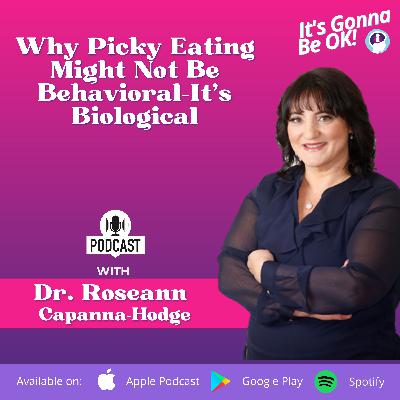
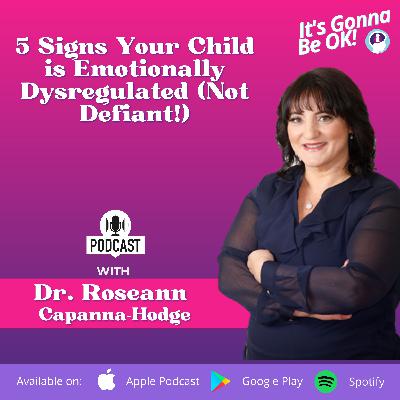
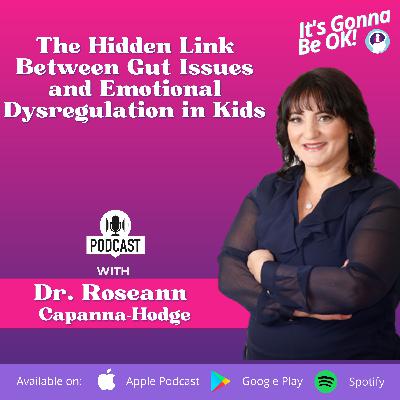
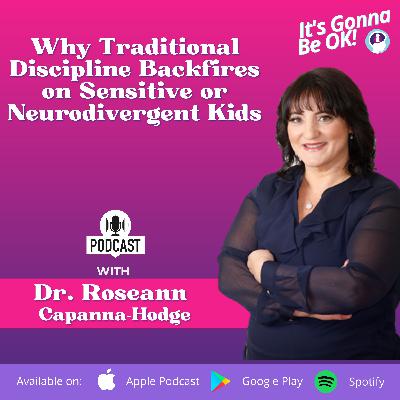
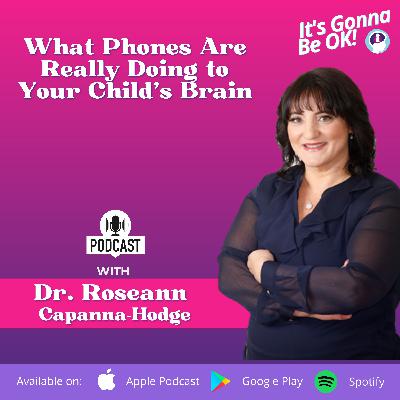
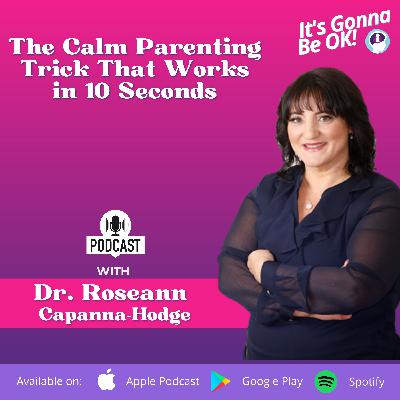

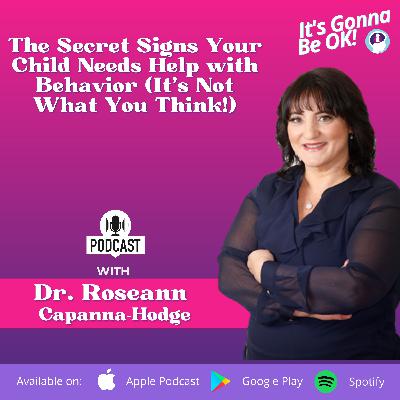
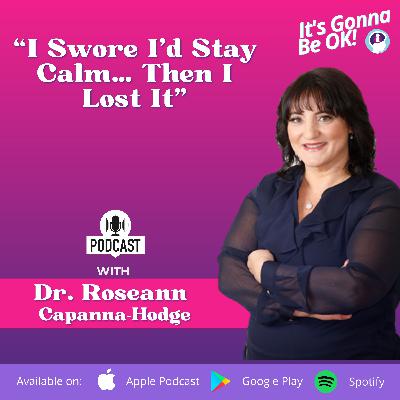

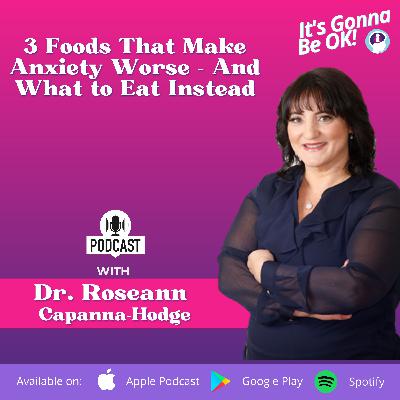
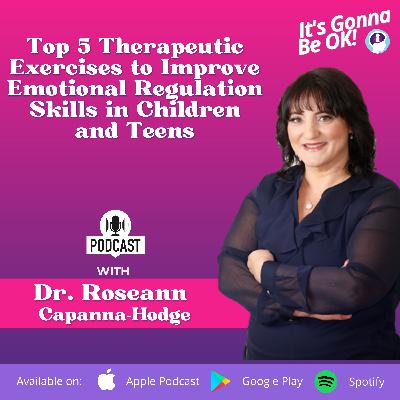


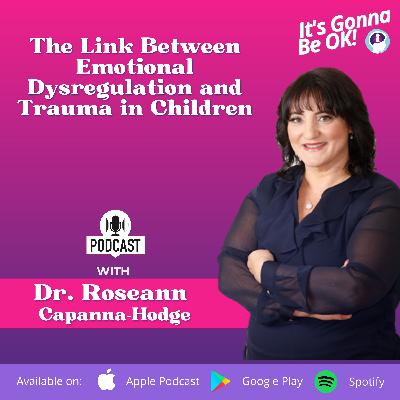
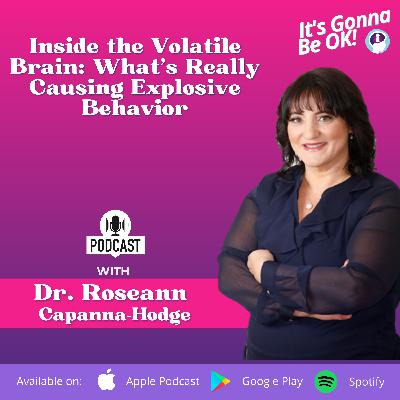
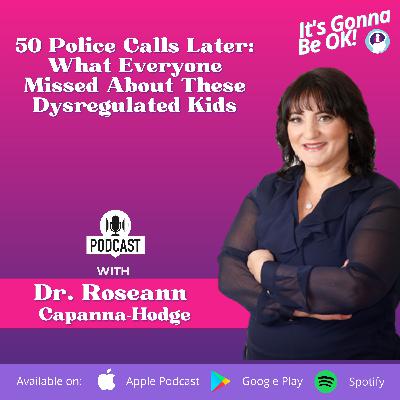
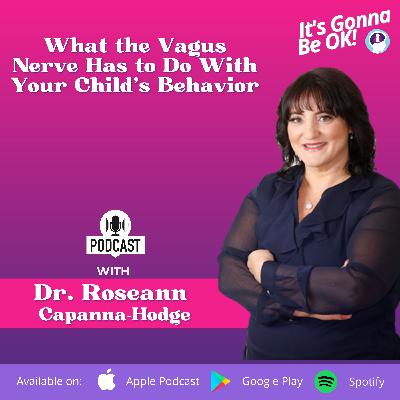
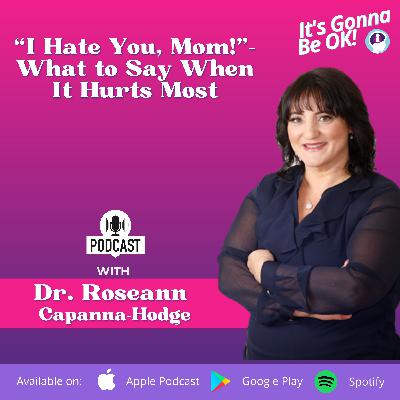
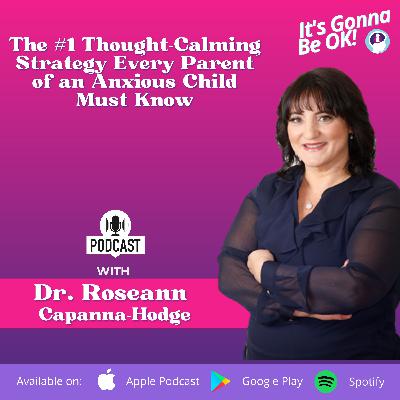


On weekends, you can not only relax. The cryptocurrency market works 24 hours / 7 days, so you can get an additional profit. We will do this using the Ethereum scaling strategy on standard technical indicators. mfi indicator crypto